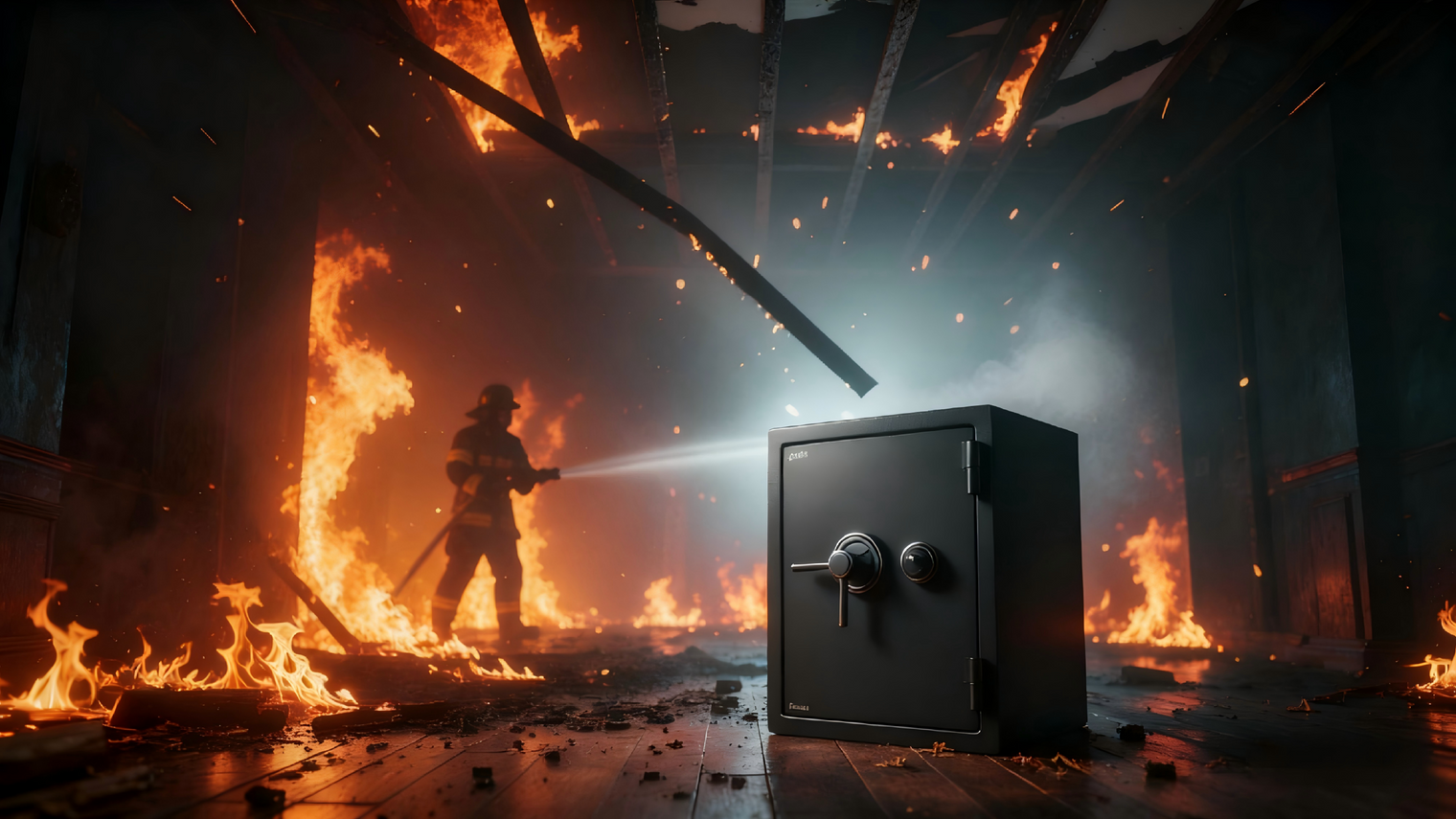When it comes to protecting our most valuable and irreplaceable possessions, a home safe is often the first line of defense. But when faced with the catastrophic threat of a house fire, how much faith can you really place in a box labeled "fireproof"? This blog post will delve into the effectiveness of fire-resistant safes for home use, helping you understand how they work, what the ratings mean, and how to choose the right one to safeguard your valuables.

First Things First: "Fireproof" vs. "Fire-Resistant"
It's crucial to understand a key distinction in terminology: virtually no consumer-grade safe is truly "fireproof." The more accurate term is "fire-resistant." This means the safe is designed and tested to withstand intense heat for a specific period, protecting its contents from damage. It doesn't mean it can survive any fire indefinitely. Understanding this sets a realistic expectation for what a home safe can and cannot do.

How Do Fire-Resistant Safes Work?
The secret to a fire-resistant safe lies in its construction. These safes are typically built with a dual-wall design. The cavity between the inner and outer steel walls is filled with a specialized insulation material, often a proprietary slurry that includes gypsum.
When exposed to high temperatures, this insulation material undergoes a chemical process called calcination. It releases steam and moisture, which absorbs a significant amount of heat energy. This process effectively keeps the internal temperature of the safe below a critical threshold, protecting sensitive items like paper documents or digital media from igniting or melting.

Decoding the Labels: Understanding Fire Ratings
The most reliable indicator of a safe's effectiveness is its fire rating, which is awarded by independent testing agencies like UL (Underwriters Laboratories) or ETL (Intertek). These organizations subject safes to rigorous, standardized fire endurance tests.
A typical fire rating you might see on a safe looks like this: UL Class 350 1-Hour. Here’s what that means:
-
UL Class 350: This indicates that during the test fire, the safe’s interior will not exceed 350°F (177°C). This is a critical temperature because paper begins to char and become illegible at around 400°F.
-
1-Hour: This specifies the duration for which the safe can maintain that internal temperature while being exposed to external temperatures reaching as high as 1700°F (927°C).
You may also see other classifications tailored to more delicate items:
-
Class 150: Protects photographic film and negatives by keeping the interior below 150°F.
-
Class 125: Designed for digital media like USB drives, hard drives, and DVDs, keeping the interior below 125°F and humidity below 80%.

So, Are They Truly Effective?
The answer is a resounding yes—provided you choose the right one and use it correctly.
A certified fire resistant safe for home use can provide invaluable protection during a typical residential fire. Fire departments often respond within minutes, and the duration of the most intense heat may be less than an hour. A safe with a 30-minute to 1-hour fire rating is often more than sufficient to protect your vital documents, emergency cash, jewelry, and irreplaceable keepsakes from both fire and the water damage that follows from firefighting efforts.

What to Consider When Choosing Your Fire-Resistant Safe
-
Fire Rating and Duration: Consider your home's size and location. For most households, a safe with at least a 1-hour fire rating provides a solid level of security.
-
Size and Capacity: Think about what you need to protect now and in the future. It’s wise to buy a safe slightly larger than your immediate needs.
-
Security Features: Fire resistance is only half the battle. Look for safes with robust anti-theft features like solid steel construction, heavy-duty bolts, and a reliable locking mechanism (digital, combination, or biometric).
-
Water Resistance: Fires are often extinguished with water. A safe with ETL-verified water resistance can offer crucial protection against water damage from sprinklers or fire hoses, keeping your documents from being ruined.
-
Look for the Label: Always choose a safe that has been tested and verified by a reputable third-party agency like UL or ETL. Don't just take the manufacturer's word for it.
The Verdict
Ultimately, a high-quality fire resistant safe for home is a wise and necessary investment for any homeowner. While no safe is truly indestructible, a certified model provides a critical window of protection that can mean the difference between losing everything and preserving what's most important. By understanding fire ratings and choosing a safe that meets your specific needs, you can gain invaluable peace of mind, knowing your valuables are secure against unforeseen disasters.
Further Reading & Authoritative Resources
For those who wish to delve deeper into the subject of fire safety and safe standards, we recommend the following high-authority resources. These links will lead you directly to the organizations that set the standards and provide unbiased information on protecting your home and valuables.
-
UL Solutions (Underwriters Laboratories) - Product Safety Certification: As the primary testing and certification body mentioned in this article, UL sets the standards for fire resistance. Their website is a direct source of information about how products are tested and what the ratings mean.
-
Verified Link: https://www.ul.com/
-
-
National Fire Protection Association (NFPA) - Home Fire Safety: The NFPA is the world's leading advocate for fire prevention. While they don't rate safes specifically, their site is the ultimate authority on understanding fire risks, which can help you decide what level of protection you need.
-
Federal Emergency Management Agency (FEMA) - Safeguard Documents and Valuables: This resource from Ready.gov (a FEMA initiative) provides a checklist of important documents and records to protect in case of a natural disaster, including fires. It reinforces the importance of owning a fire-resistant safe.

